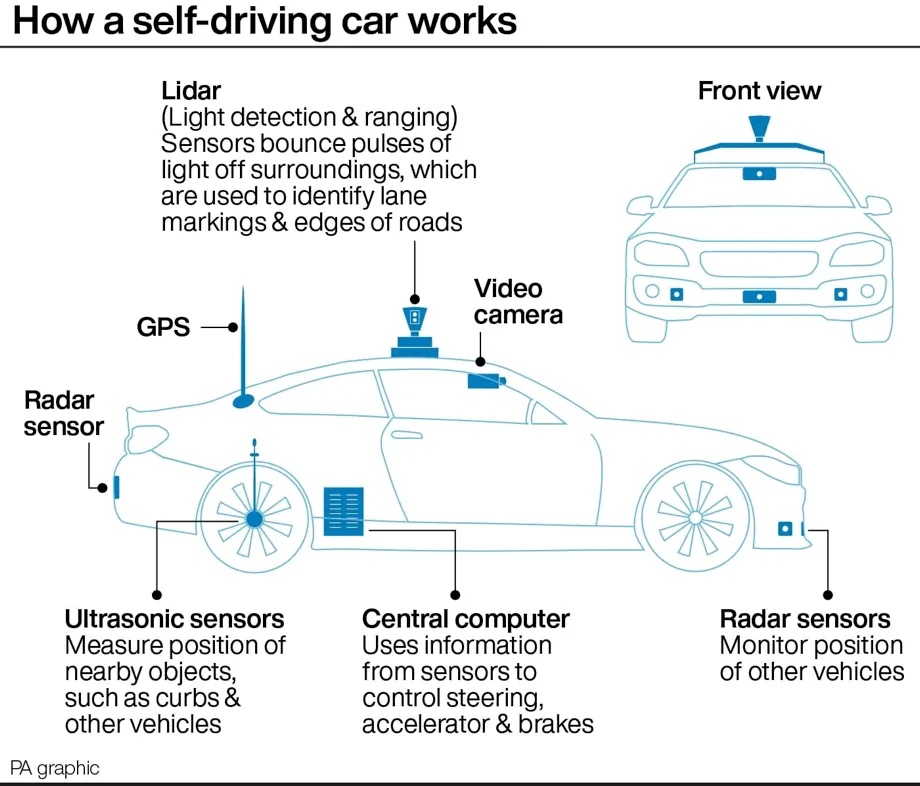Drivers could be permitted to take their eyes off the road and their hands off the wheel later this year as the Department for Transport (DfT) announced it will allow hands-free driving in vehicles with lane-keeping technology on UK motorways.
The DfT has set out how a vehicle with an automated lane keeping system (ALKS) could legally be used by a driver not paying attention, as long as there is no evidence to “challenge the ability” of it to be used autonomously.
This will only be allowed on motorways with slow traffic, at speeds of up to 37mph. Not quite Minority Report-levels of future technology, yet.

ALKS enables a motorist to hand over control to their vehicle, although they must remain in the driver's seat and be able to take over when necessary.
The tech is designed to constantly monitor speed and keep a safe distance from other road users, normally through the use of cameras and sensors.
In the event the system detects an “imminent collision risk”, it will carry out an “emergency manoeuvre” which could involve braking or a change of direction.
The DfT claimed the tech could boost road safety as human error “contributes to over 85 per cent of accidents”, and referred to ALKS as “traffic jam chauffeur technology”.
A consultation has been launched on updates to the Highway Code to ensure autonomous systems are used safely and responsibly.
Read more about self-driving tech:
“This is a major step for the safe use of self-driving vehicles in the UK, making future journeys greener, easier and more reliable while also helping the nation to build back better," said transport minister Rachel Maclean.
“But we must ensure that this exciting new tech is deployed safely, which is why we are consulting on what the rules to enable this should look like.
“In doing so, we can improve transport for all, securing the UK’s place as a global science superpower.”
Steve Gooding, director of the RAC Foundation, said humans are “invariably the weak link” when it comes to driving safely, but he warned there are “challenges” when journeys involve a transfer of control between technology and the person behind the wheel.
“There is a risk of situations in which drivers over-rely on the automated system, expecting it to deal with events for which it is neither intended nor capable," said Gooding.
“And what happens when drivers are expected to take back control in an emergency? Research for us shows that it can take drivers several seconds to regain command of their vehicle.”
How do automated lane keeping systems work?
The system varies between manufacturers, but generally involves the use of cameras and sensors to keep a vehicle moving in its lane without hitting other road users.
Also referred to as 'lane assist', the technology has complete control of the lateral (left and right) and longitudinal (forward and back) movements of the car.
Is the technology safe?
The Government claims it can “improve road safety by reducing human error”.
The system also requires a driver to be able to take back control within 10 seconds if a problem is detected. If the driver fails to respond, the car will slow down, its hazard lights will begin flashing and its infotainment system will turn off.
Does this mean drivers could get out of their seat and leave the car to drive?
Someone needs to be in the driver’s seat, with their seatbelt fastened, for the system to work.
Concerns about autonomous vehicles have been raised this month, as two men were killed on 17 April when a Tesla Model S crashed into a tree in Texas. However, police believe no-one was in the driver’s seat when the collision occurred, and Tesla boss Elon Musk wrote on Twitter that “data logs recovered so far show Autopilot was not enabled”.
